#they should do a time travel episode where lloyd goes back in time and meets his younger dad..
Text



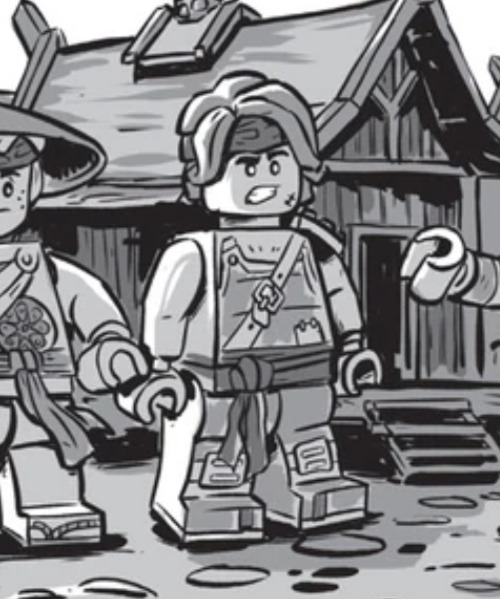


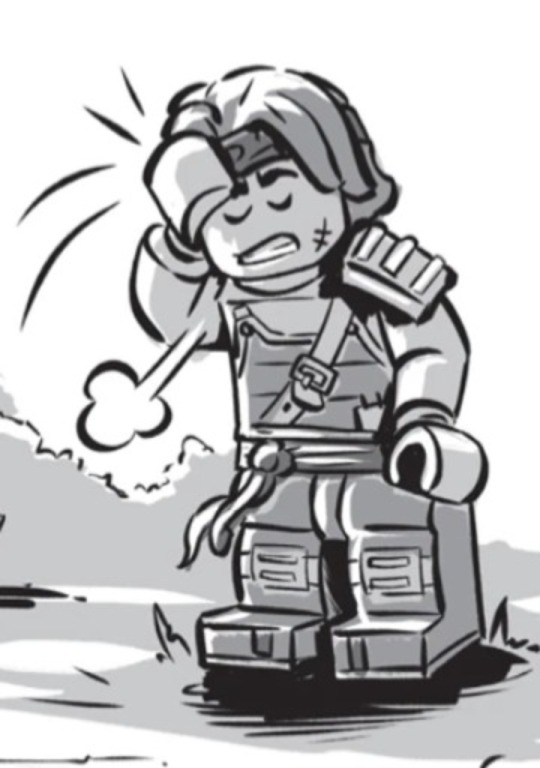
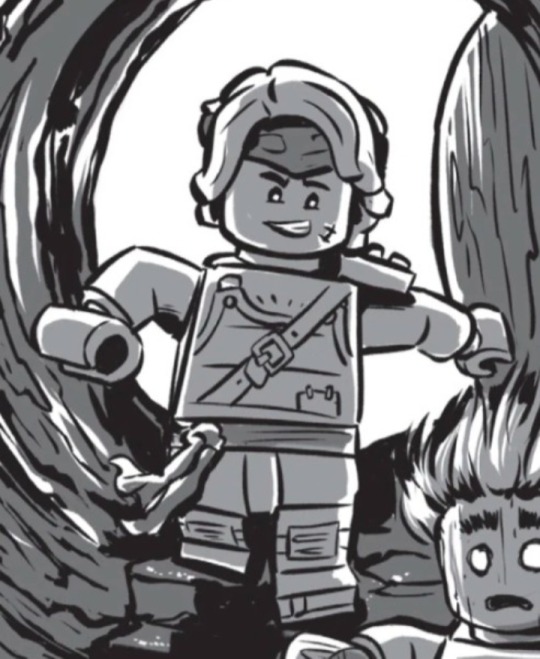
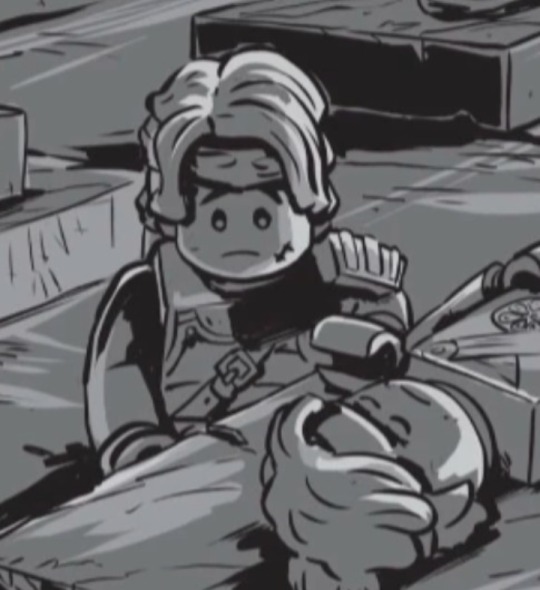
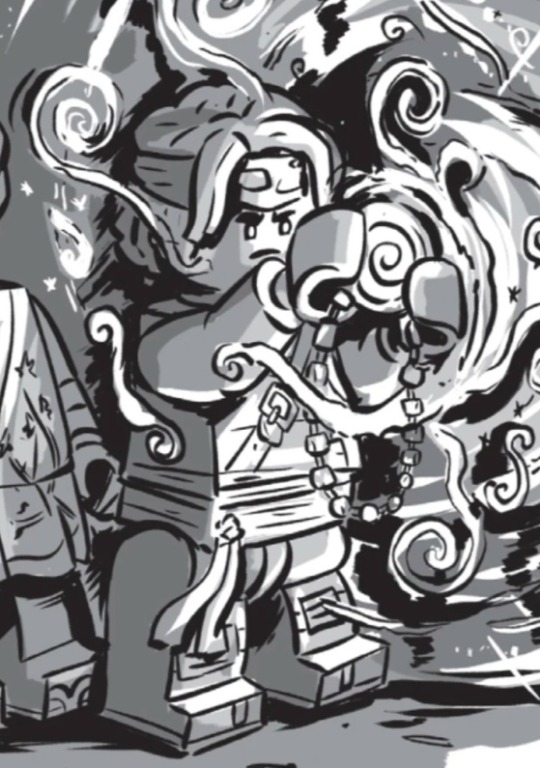
Save me young garmadon..save me.. young garmadon..
#ngl misako was a real one for getting pregnant with this man#lloyd gets his looks from his dad 🥹💚#they should do a time travel episode where lloyd goes back in time and meets his younger dad..#that WAS gonna be the concept of the ninjago movie too..until they SCRAPPED IT#anyways that man got LAID hes canonically not a virgin *mind blown*#ninjago#ninjago fandom#lord garmadon#lloyd garmadon#garmadon#ninjago garmadon#garmadon ninjago#ninjago lord garmadon#lord garmadon ninjago#the spinjitzu brothers
219 notes
·
View notes
Text
Laurits/Loki as a queer character in Netflix’s Ragnarok
Spoilers for season one of Netflix’s show Ragnarok!
I binged the first season of the Netflix show Ragnarok yesterday, and felt compelled to write something about it. This is somewhat hastely written, so I apologise if the arguments are not as well thought out as they could be, but I wanted to write something. So here we go:
In the Netflix show Ragnarok we meet the two brothers Magne and Laurits as they move to the Norwegian town of Edda with their mother (Ragnarok 2020a). The audience and the characters soon realise that this town is not quite normal, and something mysterious is afoot… It becomes clear that Magne has been bestowed with some sort of magical powers and has been put in the role of Thor in the battle between Norse gods and giants. However, it is less clear what role Laurits is supposed to play. In this text I will claim that he is the Loki to Magne’s Thor, and that is especially interesting in regards to the queerness of his character.
So, first of all, why do I think Laurits is Loki? I think the first point that should be made here is his and Magne’s physical descriptions.

Here we see Laurits sitting furthest to the left, with a green jacket, and Magne sitting to the right of him (with blue jeans and a red t-shirt). Magne and Laurits very much look like how one would imagine Thor and Loki, especially a contemporary audience who has seen the Marvel version of them:
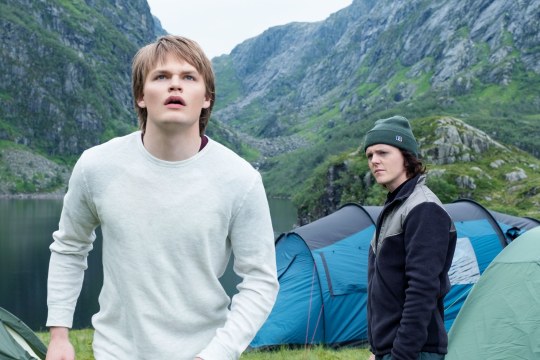

But even beyond Laurits’ looks and brotherly relation to the Thor character, there are parallels between Loki and Laurits. There is his slightly deceptive and trickster like nature, such as when he plays pranks on Magne (for instance by messing up his essay for class when he was supposed to look over the spelling) (Ragnarok 2020a, 22 min). Then there’s also his affinity with the Jutul family, who are actually giants (the name seems to be a play on the old Norse word for giants, jǫtunn). The Loki of Norse myth is often associated with giants as well and might be giant or half-giant (Hume 2019). In the series it is also hinted at several times that Laurits has some sort of magical connection to the giants, for instance at the school dance (Ragnarok 2002b, 31 min). It is also hinted at that the father of the Jutul family, Vidar, has had an affair with Laurits’ mother Turid previously (for example: Ragnarok 2002b, 11:30 min). This makes me wonder if Laurits’ parents are in fact Turid and Vidar, making him half giant… If that is the case, he would have a sort of double cultural heritage, that of humans and that of giants.
Another cultural aspect that is interesting to look at is the parallels between the Loki of myth and the culture of the indigenous Sámi people in northern Scandinavia and Russia (Laidoner 2012). For one, the land of the giants seems to somewhat resemble the description of the Sámi peoples land, in regards to geographical location (north, on the borderlands). Similar to how Sámi was (and are) seen as “other” by Scandinavian people, so were the jǫtunn seen by the æsir (the gods). Laidoner also sees parallels between Loki and historical Sámi shamanism (noadi). She writes:
Loki’s potential links to the cultural world of the Sámi might perhaps first and foremost lie in his combination of being both a jǫtunn and (possibly) an áss and the fact that he seems to lack a home and a clear cultural background (…). This certainly makes him a very untrustworthy outsider among the æsir who, irrespective of the fact that their own ancestry goes back to the jǫtnar, frequently show hostility towards them. Loki’s jǫtunn background, and the possible connection between the Sámi and the jǫtnar whose headquarters seem to have been placed in an area that corresponded to the Sámi territories, allow us to place the focus of the following discussion on Loki’s potential affiliation with Sámi culture, where ideas of symbolic soul travels, cosmic oppositions and ambiguity seem to form a natural part of human existence, something most clearly reflected in the noaidi-tradition. It is difficult to overlook the fact that many dualistic ideas of the same kind are also embodied in the Loki figure. Besides being borderline jǫtunn and áss, a curious relic of Loki’s possible connection to the Sámi-world can perhaps be found in his everpresent duality. This duality is shown in several contrasting qualities, such as existing in both male and female form and being a father and a mother, representing aspects of both good and evil (to the extent that such clear distinctions existed in pre-Christian times), being a causer and resolver of problems, a thief and a bringer of valuable objects, all of which again seems to be in accordance with the functions of a noaidi. (Laidoner 2012, 69)
So, as we can see, Loki crosses borders between both cultures and genders, and both of these aspects make him seem untrustworthy. We can also see a parallel here to how indigenous people have been seen and are seen still today. Now, to return to Laurits, we can see some of these aspects here. Laurits move between different worlds, from the luxury of the Jutuls and the popular kids at school, to his rather less glamorous home-life. As I mentioned above, I also think there’s a possibility of him being half Jutul. But he also most definitely plays with gender borders.
I have previously written on this blog about characters moving between genders, for instance regarding Varys in ASOIAF/GoT and Alex in the “Magnus Chase and the Gods of Asgard” series by Rick Riordan. As mentioned in the latter text, in that story Loki is presented as genderfluid for similar reasons as I outlined above with his changing of sex/gender. In the analysis of Varys, I wrote about how he was perceived as a transgressor of both borders of gender and ethnicity, with being a eunuch from “the East”. (I there relied on texts about the historical eunuchs in for instance Ancient Greece (Llewyn-Jones 2002; Nikoloutsos 2008)). Similar to what Laidoner writes about Loki, one can see that the fluidity of Varys is connected to his movement between different gender expressions as well as cultures. Here I want to briefly touch on some more theoretical background that might be useful when understanding the crossing of borders with gender and ethnicity. Emma Bond writes about the experiences of trans people who also crosses borders of nations, and how they are seen as transgressors in double ways (2018, 71). She further writes that those who permanently inhabit this liminal space between borders, this site is often experienced as a place of alienation and violence (2018, 97). So, throughout these different examples we can see that people who cross borders of gender and ethnicity are seen as suspicious, and perhaps doubly queer (in the sense of non-conformity to norms of sex/gender/sexuality, which is of course also bound up with norms of ethnicity).
In the show, Laurits is seen crossing gender borders several times. One clear example is during the school dance, where he shows up with eyeliner, skinny jeans, and his mother’s old shirt (Ragnarok 2020b, 22:30 min). At the same dance it becomes clear that he has somewhat of a crush on the popular boy Fjor Jotul (who might be his half-brother if my theory is correct… but I’m also not sure if the Jutul family is actually related in the way they claim…) (Ragnarok 2020b, 24:36 min). This is of course also a break with gender norms, that dictate that men should be attracted to women. Then in the last episode of season one Laurits shows up to the school’s celebration of the national day dressed as the school’s headmistress Ran Jutul to mock and criticise her (Ragnarok 2020c, 31:40 min). Here he cross-dresses, perhaps in a similar way as the mythological Loki has done at times. He also plays the role of the trickster very well. Throughout the season it has been somewhat unclear on whose side he is on, but here at the end he helps the “good guys” (mainly his brother), but of course in a mocking manner. This illuminates the dualistic nature of Loki that Laidoner describes (2012).
Overall, Laurits can be seen as portraying several aspects of Loki. He is a trickster, but also a somewhat fluid character in regards to his heritage/culture and gender/sexuality. He moves between different spaces, inhabiting the liminal space between borders of good/evil, feminine/masculine, etc. This portrayal of a queer character is very interesting, and I hope in the event that the show is renewed for a second season it will explore this further. I should however mention the risk of showing a queer character as a deceiver, this could of course play into stereotypes about queer and/or trans characters. This is something that I write about in the previously mentioned text about Alex from the Magnus Chase novels. But I also think this can be portrayed well and interestingly if the audience is shown a contrast between how Laurits is perceived and who he is. A similar element was most definitely present with Magne in season one. So overall, this portrayal of a queer Laurits/Loki is quite interesting and promising.
References
Bond, Emma. 2018. Writing Migration through the Body. Springer: Cham
Hume, Kathryn. 2019. “Loki and Odin: Old Gods Repurposed by Neil Gaiman, A. S. Byatt, and Klas Östergren.” Studies in the Novel, (51)2: 237-308.
Laidoner, Triin. “The Flying Noaidi of the North: Sámi Tradition Reflected in the Figure Loki Laufeyjarson in Old Norse Mythology.” Scripta Islandica 63 (2012): 59–91.
Llewellyn-Jones, Lloyd. 2002. “Eunuchs and the royal harem in Achaemenid Persia (559-331 BC)”, in Eunuchs in antiquity and beyond, ed. Tougher, Shaun, 19-50. Swansea: The Classical Press of Wales.
Nikoloutsos, Konstantinos P. 2008. ”The Alexander Bromance: Male Desire and Gender Fluidity in Oliver Stone’s Historical Epic.” Helios, (35)2: 223-251
Ragnarok. 2020a. New Boy. [TV-show] Netflix, 31st of January.
Ragnarok. 2020b. 541 Meters. [TV-show] Netflix, 31st of January.
Ragnarok. 2020c. Yes, we love this country. [TV-show] Netflix, 31st of January.
#ragnarok#ragnarok netflix#ragnarok 2020#HOW DO I TAG THIS SO PPL DONT THINK I MEAN MARVEL#feminism#queer
856 notes
·
View notes
Text
KH3 ReMind - Pros & Cons
Pros, otherwise known as the fixes for KH3′s bullshit:
- CHRISTOPHER LLOYD AS MASTER XEHANORT. ‘Nuff said.
- Chirithy is still cute, and we find out how it got back to Ven.
- All of the new battles and tweaks to old battles are great.
- Namine actually gets some real screentime and is seen doing stuff.
- The outcome of Lingering Will vs. Terra-Xehanort gets shown.
- You can play as heroes other than Sora throughout the climax.
- Aside from failing to correct that scene with Terra-Xehanort (where everyone but Donald and Goofy acts like an idiot), Kairi is done justice throughout. Lea is shown to believe in her inner power which she displays by fighting Xemnas to a stand-still, her not doing anything while being kidnapped now makes sense because Xemnas used a Nil technique to drain all of her energy and she doesn’t have a time-traveling counterpart to restore it like Sora does, once Sora brings her back she kicks Master Xehanort’s ass and gets to be part of the group when they destroy him, she gets to have a romantic moment with Sora in the Final World and be aware of his upcoming fate so that she’s prepared for it, we see her actively take part in restoring Namine, and she actually has good facial animation that captures her character this time around! If only Hayden Panettiere had returned to voice her, then it’d have been perfect.
- The messy Seasalt Trio reunion sequence has been heavily modified so that it’s more coherent as to what’s going on and, while I don’t particularly care for the Seasalt Trio, it does bring them greater closure than they had before so their fans should be happy with it.
- Explorable Scala Ad Caelum, and it’s as grand as I’d imagined it to be.
- Sora being legitimately smart in the solution he comes to at the climax.
- The battle with the Xehanort Replicas, but in particular the part where you play as King Mickey. The Kingdom Hearts franchise hadn’t pulled something that powerful since KH2, and it does wonders at redeeming Mickey’s reputation, which had taken a hit these past 3 years.
- Via his merged replicas, we finally give Master Xehanort the death scene he deserves: engulfed in a mega blast of light from everyone’s Keyblades which causes him to shatter. It’s also the only time since the original game that repeating “My friends are my power!” works.
- Leon, Yuffie, Aerith and Cid return in “Limitcut Episode”.
- Data Analysis and Data Greeting; the former being a return of the Data Organization XIII type of battles players loved so much in KH2:FM (really, there’s even a datascape-based recreation of the Garden of Assembly and a remix of its musical theme), and the latter being an insanely fun and unique idea that lets you make your own KH adventures, which is far preferable to sticking with this series in the future. Thank you, Cid, you are a true tech genius!
- The final line of the true final scene (whichever version you get). I cannot stop laughing; it’s clear that the game developers have developed a sense of self-awareness and could not resist ending the Dark Seeger Saga with a line that most perfectly surmises the whole thing.
Cons, otherwise known as Nomura not knowing when to quit:
- The opening sequence of ReMind, which goes from a bullshit new scene with Xigbar and Luxord to that bullshit end scene of KH3 when Sora embarks on his quest to find Kairi via the Power of Waking to a bullshit flashback of Young Xehanort meeting the Master of Masters (huh!?) to a scene where old Master Xehanort is relaying this memory to Saix and Xigbar before the three of them make their plans, which require a lot of exposition. And I thought the first 20 minutes of The Rise of Skywalker went by too quickly while throwing too much at you!
- “Limitcut Episode” begins with Riku finally interacting with Terra, which should be good since it was such an obvious oversight KH3 made. Unfortunately, what they talk about simply amounts to more obnoxious character shilling for Creator’s Pet Riku, continuing to beat in the retcon that started since he met Terra that he always sought “strength to protect his friends”.
- Well, the justice done to Kairi in “ReMind” sure didn’t last long, because once we get to “Limitcut Episode” we learn that she willingly placed herself in a coma for a year so that Ansem the Wise and co. can study her heart and see if it holds a key to bringing back Sora. She could’ve easily been the one to do all the active stuff that’s being done here at Radiant Garden, her own birthplace, but nope, it’s gotta be Riku because of fucking course it is.
- Yozora. Just...everything about him and having to do with him. I guess it’s kind of cool that Dylan Sprouse is his English voice actor and he gets to show his range, but otherwise he’s just the worst. Final Fantasy Versus XIII didn’t happen, Nomura. Deal with it and move on!
- Willa Holland, Alyson Stoner, Quinton Flynn and David Gallagher are not even trying here. And yeah, that was true of Holland and Gallagher in the first place, but I got the impression that Stoner and Flynn were at least giving it a genuine shot even if it didn’t turn out that well. The only positive is that David Gallagher playing Riku giving exposition on what everyone has been up to since Sora’s disappearance in “Limitcut Episode” is so bad that it’s hilarious.
- As cool as all of the fixes for KH3′s ending are, they still chronologically transpire after the original ending, so that remains in place as having actually happened at some point. What’s more, the fixes are reliant on further convoluted time travel and the Power of Waking bullshit.
- The nature of the thing. The stuff KH2 was missing that KH2:FM absolutely needed to add in order to fix it amounted to just a higher difficulty mode, a few scenes, a boss battle, a new ability (actually, an old one), and a collection quest added to the worlds. Everything else on top of that was just icing. But the stuff KH3 was missing was on a much more fundamental level that it needed this much of an overhaul. KH2 was a satisfying conclusion to the original trilogy even before it got its Final Mix, whereas KH3 was not a satisfying conclusion to the whole fucking Xehanort Saga until this DLC release, and I’ll never be able to overlook that.
5 notes
·
View notes
Photo

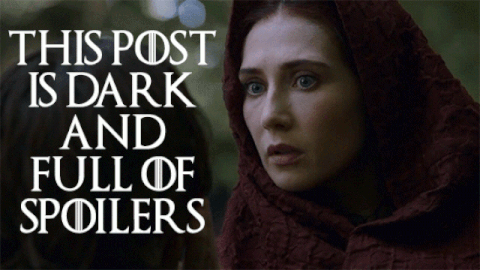
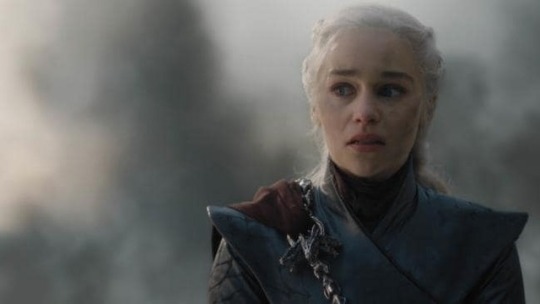
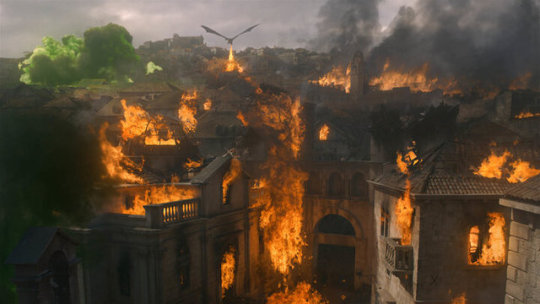
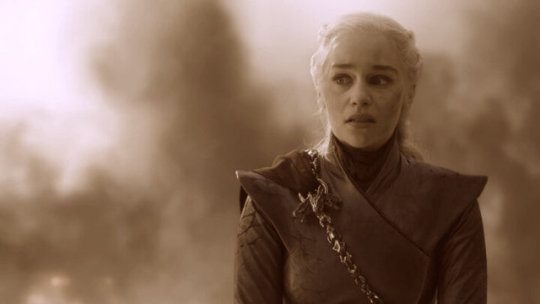

‘Game Of Thrones’ Built Up Its Female Characters Just To Watch Them Fall
The women we championed for nearly a decade suffered confusing character shifts in the final season.
By Leigh Blickley 05/14/2019
Bells continuously chime as Daenerys Targaryen (Emilia Clarke), sitting atop her fire-breathing dragon Drogon, stares out at King’s Landing. She’s enraged, having recently watched Queen Cersei Lannister (Lena Headey) order the execution of her best friend, Missandei (Nathalie Emmanuel), shortly after her dragon-child Rhaegal was speared to death.
Before facing those losses, Dany fought the army of the dead, held her adviser Jorah Mormont (Iain Glen) as he took his last breath and discovered that her new love, Jon Snow (Kit Harington), was actually her nephew, the true heir to the Iron Throne. At this particular moment, she’s unhinged. And bells are ringing. And ringing, and ringing.
With the Red Keep in sight, Dany snarls as she decides to forgo everything she’s become in favor of an old Targaryen tactic: “Burn them all.” She goes full villain in the penultimate episode of “Game of Thrones,” scorching enemies and innocents alike as she surrenders to madness.
Yet many viewers saw little forewarning that a character twist of this magnitude was coming, and her erratic change of heart was a punch to the gut. Instead of the satisfying conclusion of a long descent to depravity, Dany suddenly shifts modes, from a woman who graciously earned loyalty over seven seasons to a power-hungry monster who murders thousands of men, women and children.
Sure, she wasn’t always perfect, but the Daenerys Targaryen we knew was the fearless Mother of Dragons. She was Khaleesi, who united the Dothraki after the death of Khal Drogo (Jason Momoa), later rallying them to fight for her claim to the Seven Kingdoms. She was Mhysa, who freed the Unsullied and was lifted up by the slaves of Mereen. Dany rose from the ashes to break chains and then risked everything to protect Jon and the North from the Night King’s army.
To see a woman so fully represented over 70 hours of television, especially in a fantasy epic, was groundbreaking. But, with a final season of just six episodes, showrunners David Benioff and Dan Weiss decided that a couple of scenes were enough to turn the unburnt beauty bad ― and essentially muddied her yearslong journey.
The “Game of Thrones” audience had devoted so much time to Dany, and other characters, only to now watch Benioff and Weiss hurry along the ending (and move on to their “Star Wars” trilogy). Why couldn’t they, after spending nearly two years crafting the final season, show us Dany’s slow decline into madness? Why do we have to watch “Inside the Episode” to figure it all out?
Surely George R.R. Martin, who wrote the unfinished “Song of Ice and Fire” book series on which the HBO show is based, told Benioff and Weiss where he wanted the storyline to go: “Mad Queen” Dany destroys King’s Landing, demonstrating that humanity, not necessarily the dead, is the true enemy. The thing is, the showrunners decided to shorten the final two seasons of “Game of Thrones,” to seven and six episodes respectively, and rush through key plot points to reach Martin’s goal. And it’s turned into a bit of a nonsensical mess.
Sure, make Dany evil ― women can be monsters, too. We’ve certainly seen glimpses of her “madness” in the past, whether it be callously watching as her brother Viserys (Harry Lloyd) is killed by Khal Drogo in Season 1 or perhaps prematurely burning alive the father and brother of Samwell Tarly (John Bradley) in Season 7.
But whereas, lately, the show tells us what to think, the books present Dany’s inner monologue. Readers can see how she fights to shake her violent family history as not only her actions but her wide-ranging relationships with siblings, friends and lovers are described.
From “A Storm of Swords”:
“I was alone for a long time, Jorah. All alone but for my brother. I was such a small scared thing. Viserys should have protected me, but instead he hurt me and scared me worse. He shouldn’t have done that. He wasn’t just my brother, he was my king. Why do the gods make kings and queens, if not to protect the ones who can’t protect themselves?”
“Some kings make themselves. Robert did.”
“He was no true king,” Dany said scornfully. “He did no justice. Justice ... that’s what kings are for.”
Ser Jorah had no answer. He only smiled, and touched her hair, so lightly. It was enough.
Although “Game of Thrones” used to give us more context around characters and their decision-making, once it passed the books’ timeline in Season 6, the series faltered a bit in terms of depth. It didn’t show us the intricacies of Dany’s small council, her romance with Jon or her friendship with Missandei, who is only a young girl in Martin’s novels. Perhaps if we saw the show’s version of Dany and Missandei have a meaningful conversation about fear or loneliness ― versus men and sex ― we would have understood Dany’s underlying fragility and why Missandei’s murder triggered a rage within her. Instead, we saw the one woman of color become a plot device to turn Dany, as well as her own lover Grey Worm (Jacob Anderson), to the dark side.
That’s all to say that the recent rushed storylines have prevented us from getting that nuance we previously used to connect the dots.
The same flaw also hurts other women on “Game of Thrones,” including Cersei, Brienne of Tarth (Gwendoline Christie) and Arya Stark (Maisie Williams).
Brienne is one of the strongest warriors in Westeros. She killed Stannis Baratheon (Stephen Dillane) and took down the 6-foot-6 Hound (Rory McCann) ― with a few solid punches, might we add. Yet she turned into a puddle of mush when Jaime Lannister (Nikolaj Coster-Waldau) left her for Cersei ― something she would’ve never done three seasons ago. In one sense, it’s wonderful to see a vulnerable woman on screen. But Brienne ― who is rarely shown out of armor ― sobbing in a nightgown came out of left field. (Love makes us do crazy things?)
And Cersei was so shocked and afraid to meet her rubbly end during Episode 5, Season 8, that it’s easy to forget she once told Ned Stark (Sean Bean): “In the game of thrones, you win or you die.” The ruthless Cersei we’ve studied over eight seasons, the most cunning of the cunning, would’ve known to flee the city when she saw dragon fire (especially if she wanted to protect her unborn child). Or she would’ve at least had another plan in case those scorpion artillery weapons didn’t work out.
We’re not watching the most adventurous show in the world for uninventive writing. Yet here we are.
During the most recent episode, The Hound easily convinces Arya to go home and forget about killing Cersei. She hugs him goodbye, gives up on Cersei and tries to make it safely out of King’s Landing.
Eh, what? We’ve watched Arya train for years to become an assassin. She just destroyed the Night King with a stab of a dagger! She doesn’t fear death! She just traveled weeks to get to the capital for one sole purpose: to murder the woman who betrayed her family.
Too-fast, terribly thought-out writing has reduced “Game of Thrones” to a soap opera. We miss the scenes where Dany argues the advice of Ser Barristan Selmy (Ian McElhinney). Or when Arya secretly soaks up intel from Tywin Lannister (Charles Dance). Or how about when Sansa Stark feeds her abusive husband Ramsay (Iwan Rheon) to his own hounds?
Now we see a half-baked “Mad Queen” and a woman like Sansa crediting sexual violence, not her own strength, for making her a power player in Westeros.
THE HOUND: None of it would’ve happened if you left King’s Landing with me. No Littlefinger. No Ramsay. None of it.
SANSA: Without Littlefinger and Ramsay, and the rest, I would’ve stayed a little bird all my life.
It’s that bad.
Riddle me this: Why does a show featuring four leading ladies have barely any female writers? (Bonus: Michelle MacLaren was the only female director brought on to helm episodes, the last of which aired in 2014.) Although Gursimran Sandhu is credited as a staff writer for Season 8 on IMDb, only two other women, Jane Espenson and Vanessa Taylor, wrote for the series, with both of their runs ending by 2013. That, my little birds, is the root of a very big, now unfixable problem.
Espenson helped craft scenes like the aforementioned death of Viserys, and Taylor had a say in that memorable lunch between Sansa, Margaery (Natalie Dormer) and Olenna (Diana Rigg) as well as Arya and The Hound’s Brotherhood Without Banners meetup. Those back-and-forths soar in comparison to Season 8’s Sansa-Dany stares or Cersei’s unexplained cowardice.
Clearly, Sandhu couldn’t have singlehandedly saved the final season, but other women’s voices in the writers’ room might have provided more perspective into these characters’ closing motivations.
Still, Martin created these women, and Benioff and Weiss have shown they can write strong dialogue for them on this show. It just feels like the latter two’s desire to be in a galaxy far, far away perhaps trumped their desire to give these ladies what they deserve: earned arcs.
RELATED COVERAGE
‘Game Of Thrones’ Fans Had A Lot Of Feelings About Daenerys’ Fiery Choice
The ‘Game Of Thrones’ Season 8 Premiere Was Good. But Why Wasn’t It Great?
Why That Daenerys Twist On ‘Game Of Thrones’ Burns So Badly
https://www.huffpost.com/entry/game-of-thrones-women-daenerys-cersei-arya-sansa_n_5cd98811e4b0796a95dfd968
3 notes
·
View notes